Last updated on October 8th, 2022
Paraguay is a landlocked country with great natural beauty and friendly people, but is one of the least visited in South America. Below are some interesting, funny and unusual facts about Paraguay’s history, culture, famous people, literacy rate, imports and exports, popular sports, animals, natural resources, wildlife and national parks, economy, tourism and much more.
40 Interesting facts about Paraguay
1. Paraguay’s nickname is the “Corazón de América” (the Heart of America). The name refers to Paraguay’s location in the center of the South American continent.
2. Paraguay’s name is said to mean “crowned river” after the Guarani words for water and palm crown. According to former president Juan Natalicio Gonzalez, it means “river of the habitants of the sea.”
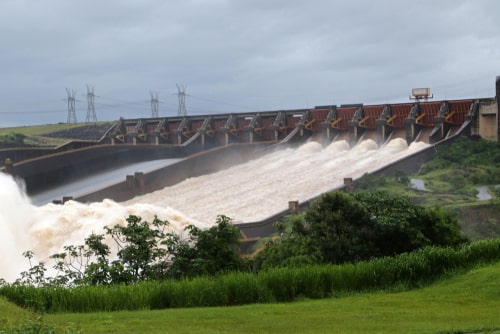
3. The Itaipu Dam on the Parana River produces almost all of Paraguay’s electricity. Situated on the border with Brazil, the dam is owned by both countries.
4. The Paraná River, which runs through Brazil, Paraguay, and Argentina is South America’s second-longest river after the more famous Amazon River.
5. Paraguay’s literacy rate is higher than that of the United States. Paraguay’s citizens age 15 and older read and write at a 94 percent literacy rate, compared to 86 percent for the U.S.
Facts about Paraguay’s Culture
6. The native Guarana people were living in Paraguay long before the arrival of the Spanish in the early 1600s. Today, 95 percent of Paraguay’s people are mestizos, descendants of those Spanish men and Guarana women. This makes Paraguay’s population the most homogenous in South America.
7. Guarani is still spoken by everyone in Paraguay, regardless of their income, politics or social class. This is one of the country’s unifying strengths. Other indigenous heritages are its traditional 38-string harp music and the traditional bottle dance, performed with dancers twirling bottles around their heads.
8. Paraguay’s people make some of the world’s finest lacework. Nanduti (meaning “spiderweb”) is beautiful lace created in circular designs and found in a rainbow of various colors. Other traditional folk arts are embroidered cloth, black clay work and ceramics, and gorgeous silver jewelry in filigree designs.
9. Paraguay’s national beverage is mate. Mate (pronounced “mahtay”) is often served hot. When it is served chilled, it is called tereré. It is imbibed through a metal drinking straw called a bombilla. Yerba mate, which is related to common holly, is cultivated on plantations.
10. The day’s main meal is eaten at noon. Two staples of the Paraguayan diet are corn and cassava, a starchy root vegetable. Cassava (or mandioca) is baked with cheeses to make the thick bread known as Chipa. Corn is used in Paraguayan soup (sopa paraguaya), Bori bori soup and other dishes.
11. Lapacho (or Taheebo) comes from the inner bark of Purple or Red Lapacho trees and is used in herbal medicines and as tea. An ancient cure, it was one of the primary medicines of the Incas.
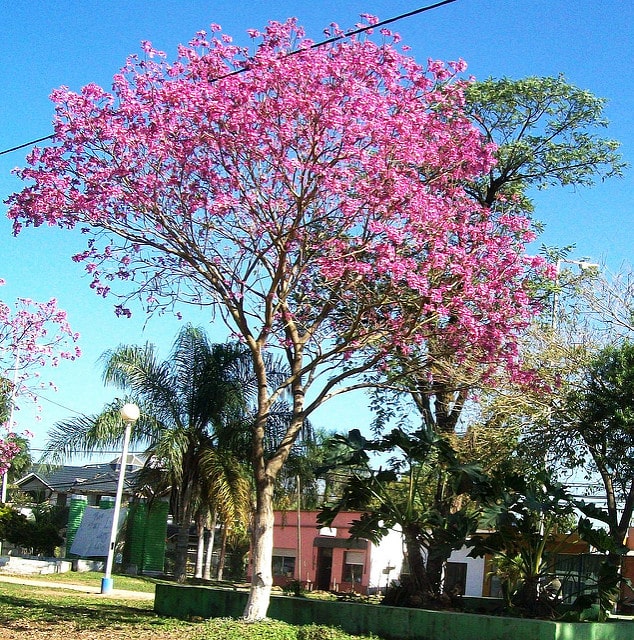
12. The people of Paraguay enjoy sports, including football (soccer), rugby, tennis, and volleyball. Fishing is as popular as football.
Paraguay Facts for Kids
13. Paraguay is the only country worldwide whose national flag has different emblems on each side. The country’s Coat of Arms is on the front and its Treasury Seal is on the back with its motto, ‘Paz y Justica’ (Peace and Justice). Paraguay’s flag is one of the world’s oldest national flags.
Flag of Paraguay
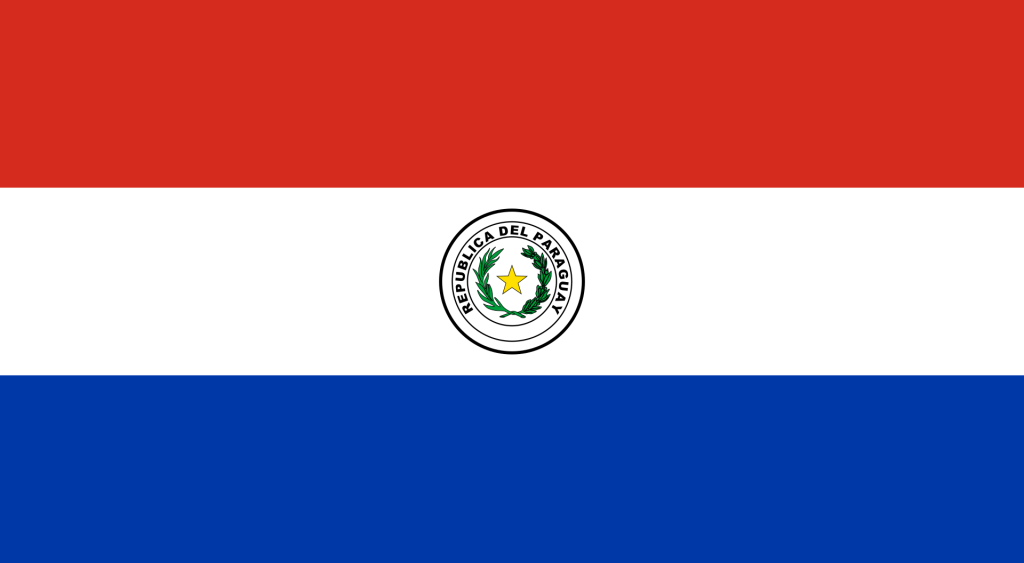
14. Though Paraguay is a land-locked country with no border on the ocean, it has a well-trained navy. Their navy is the largest of any land-locked country in the world.
15. Iguacu Falls, spanning the Iguacu River, is made up of more than 275 individual waterfall cascades, is taller than Niagara Falls, and is twice its width.
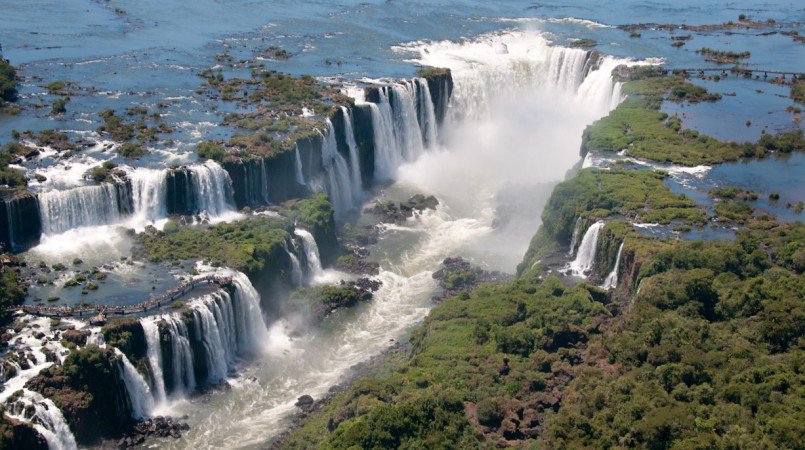
16. As many as 210 football stadiums could be built with the same amount of concrete as was used to build the Itaipu Dam.
17. Paraguay is just a little smaller than the state of California.
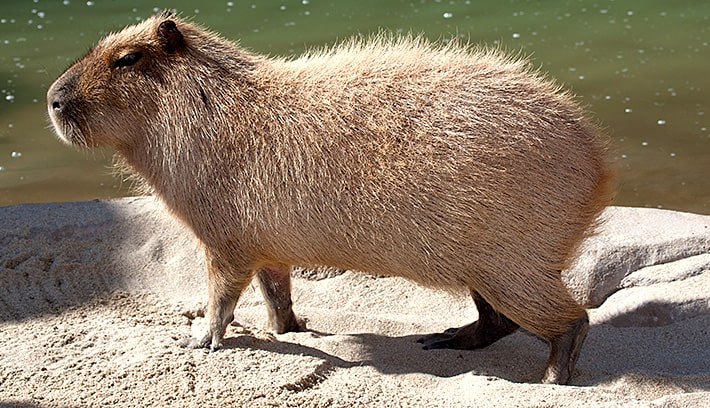
18. Famous Paraguayan athletes are Jose Luis Chilavert of football (soccer) and Rossana De Los Rios (tennis). Leryn Franco is a javelin thrower who participated in three different Olympic games and was also featured in the 2011 ‘Sports Illustrated’ “Swimsuit Edition.”
19. Paraguay is home to the world’s largest rodent called the Capybara, which is basically a giant guinea pig. Share this interesting fact about Paraguay with your friends!
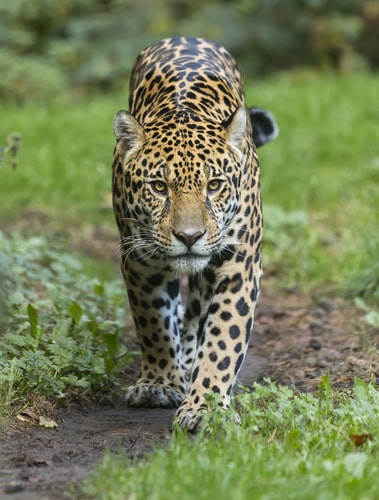
20. Endangered animals include the jaguar, harpy eagle, red parrot, giant armadillo and anteater (jurumi). More Uruguay animals include brown wolves, foxes, tapirs and more than 1000 species of birds. Paraguay also has many boa constrictors and crocodiles, and even some piranha, as well.
Funny Facts Paraguay
21. Climbing on and off the national buses, “Chipa ladies” dress in blue miniskirts, train conductor caps and fishnet stockings to sell Chipa to passengers.
22. Paraguay’s name may have come from a parrot befriended by the country’s earliest Jesuit priests. Named Frank, he eventually became dinner for those priests. Whether true or not, the country was actually labeled on 16th-century maps as “Parrot”.
23. Paraguay is in the Guinness Book of World Records for the world’s largest barbecue, which was attended by approximately 30,000 people.
24. Homes have no doorbells. To announce your arrival, clap your hands. With windows always open in the hot climate, claps are clearly heard inside.
25. Dueling is legal here, but only between participants who are registered blood donors.
26. One of Paraguay’s hidden secrets is Fermina Benitezs, the lady of 100,000 chickens. Now 70, she began making her black clay folk-art chickens when she was 17.
Paraguay on the map
Paraguay History
27. The Triple Alliance War (1864-1870) with Argentina, Brazil, and Uruguay was South America’s bloodiest war. Paraguay’s population was cut in half, and only 28,000 men survived.
28. Before the war, Paraguay was prosperous with substantial gold assets. None are known to have been recovered.
29. American president Rutherford B. Hayes was the binding arbitrator of the peace terms after the War of the Triple Alliance. Because Hayes awarded the Gran Chaco to Asuncion, Paraguay instead of Buenos Aires, he became a national hero. The town and county of Villa Hayes were named for him.
30. Paraguay didn’t grant women the right to vote until 1961, the last Latin American nation to do so. Constitutional reforms in 1992 finally gave women equal rights within their marriages.
Paraguay Economy
31. Ciudad del Este’s crowded street bazaars attract many Brazilians across the river for bargains. Many Brazilians are moving to Paraguay because its homDes are less expensive.
32. With the world’s second-largest hydroelectric plant co-owned with Brazil, Paraguay is the world’s fourth-largest electricity exporter.
33. The western Paraguay region of Chaco has 60 percent of the country’s land, but only 2 percent of the people live there. The remainder of the population lives within 100 miles of the capital Asuncion in eastern Paraguay. It is estimated that half of the population lives below the poverty level.
34. Paraguay is the world’s sixth-largest soybean producer, the second-largest tung oil producer, the second-largest stevia producer, eighth-largest corn exporter, ninth-largest beef exporter and fourteenth-largest wheat exporter. Over half of Paraguayans work in agriculture and forestry.
. . . continue reading on the next page
